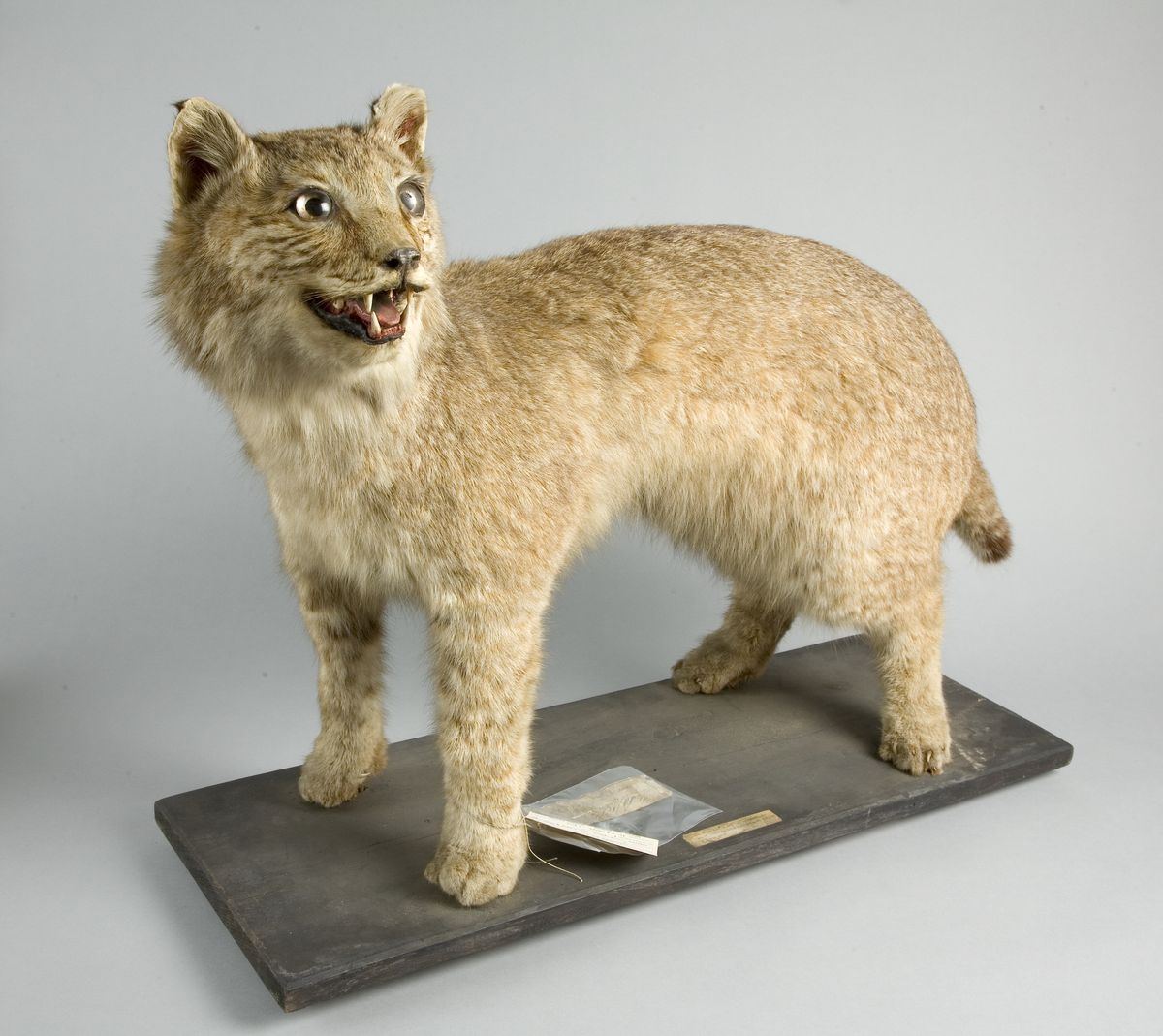Exotic Cat Prowled British Countryside a Century Ago

An exotic cat that prowled the British countryside a century ago was a non-native lynx from Canada, a new study finds.
The feline's skeleton and mounted skin have been tucked away for years in the underground storeroom of the Bristol Museum in England. Scientists analyzed the specimen and found it to be a Canada lynx (Lynx canadensis), a carnivorous animal about twice the size of a domestic cat.
"It's the earliest physical evidence we have for an escaped exotic cat in the U.K.," said biologist Ross Barnett of Durham University in England, lead author of the study published today (April 24) in the journal Historical Biology.
The public has had a long-standing fascination with controversial reports of non-native feline species, erroneously dubbed "British big cats." Whereas these reports have little traction with zoological authorities, the occasional captured animal or carcass might explain supposed eyewitness accounts of big cats in England. [Image Gallery: Britain's Mysterious Canada Lynx]
A popular theory suggested wild cats appeared in the British countryside after the establishment of the Dangerous Wild Animals Act of 1976, which forbade the ownership of potentially dangerous wild animals as pets. But the museum specimen lived well before then, records show. It was shot in the Devon countryside in the early 1900s after it killed two dogs. Its remains were donated to the Bristol Museum, which mislabeled the animal in 1903 as a Eurasian lynx, a close relative of the Canadian lynx.
In the study, researchers carefully examined the cat specimen to look for signatures of known feline species. A first look suggested the animal was one of four modern lynx species: bobcat; Iberian/Spanish/Pardel lynx; Canada lynx; or Eurasion/Northern lynx. The Iberian lynx and Eurasion lynx were ruled out because of the specimen's tawny color and abundance of dark spots. The animal's short legs, silvery-brown pelt and black markings under its face matched the Canada lynx. Its dark under-eye markings and long tail also resembled a bobcat, though it lacked the bobcat's dark tail markings and darker hind feet. The animal's size — about 1.3 feet high (39 centimeters) and 2.4 feet long (74 cm) — fit both the Canada lynx and bobcat.
To pin down the true species, the team measured the cat's physical features and compared them with those of other feline species. The analysis showed with 99.9 percent probability that the specimen was a Canadian lynx.
Sign up for the Live Science daily newsletter now
Get the world’s most fascinating discoveries delivered straight to your inbox.
Next, the team analyzed the ratio of different forms of the element strontium in the cat's bones, a marker of the water it drank and the geology of its habitat. The strontium ratio matched the composition of rocks in both Western Canada and Newton Abbot, the part of England where the cat was shot. Eastern Canada was ruled out as a possible origin, because the strontium content in the bone differed from the composition of rocks there.
The researchers tried to obtain DNA samples from the specimen's fur, but the attempts failed. This may be because many of the early techniques for preserving stuffed animals were harsh, Barnett told LiveScience.
"Lynxes haven't been in the U.K. since about the ninth century," Barnett said. But now, there's been at least one.
Follow Tanya Lewis on Twitter and Google+. Follow us @livescience, Facebook & Google+. Original article on Live Science.













